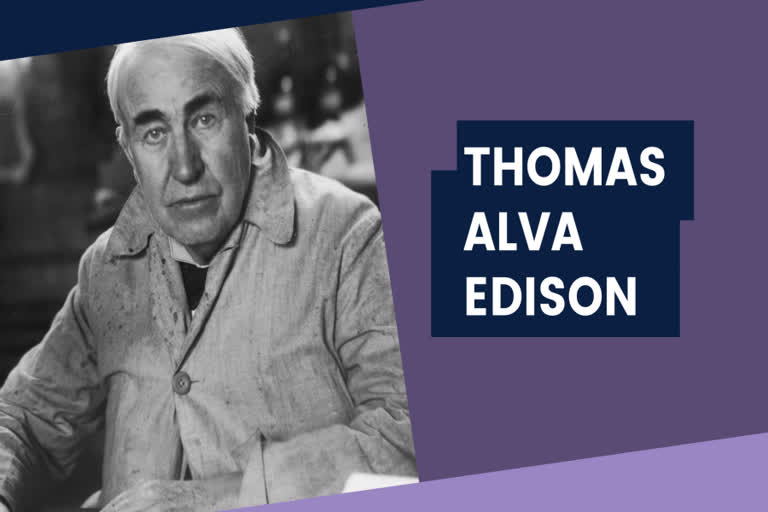Hyderabad: Edison was born on February 11, 1847, in Milan, Ohio. Below are some of Edison’s most significant inventions.
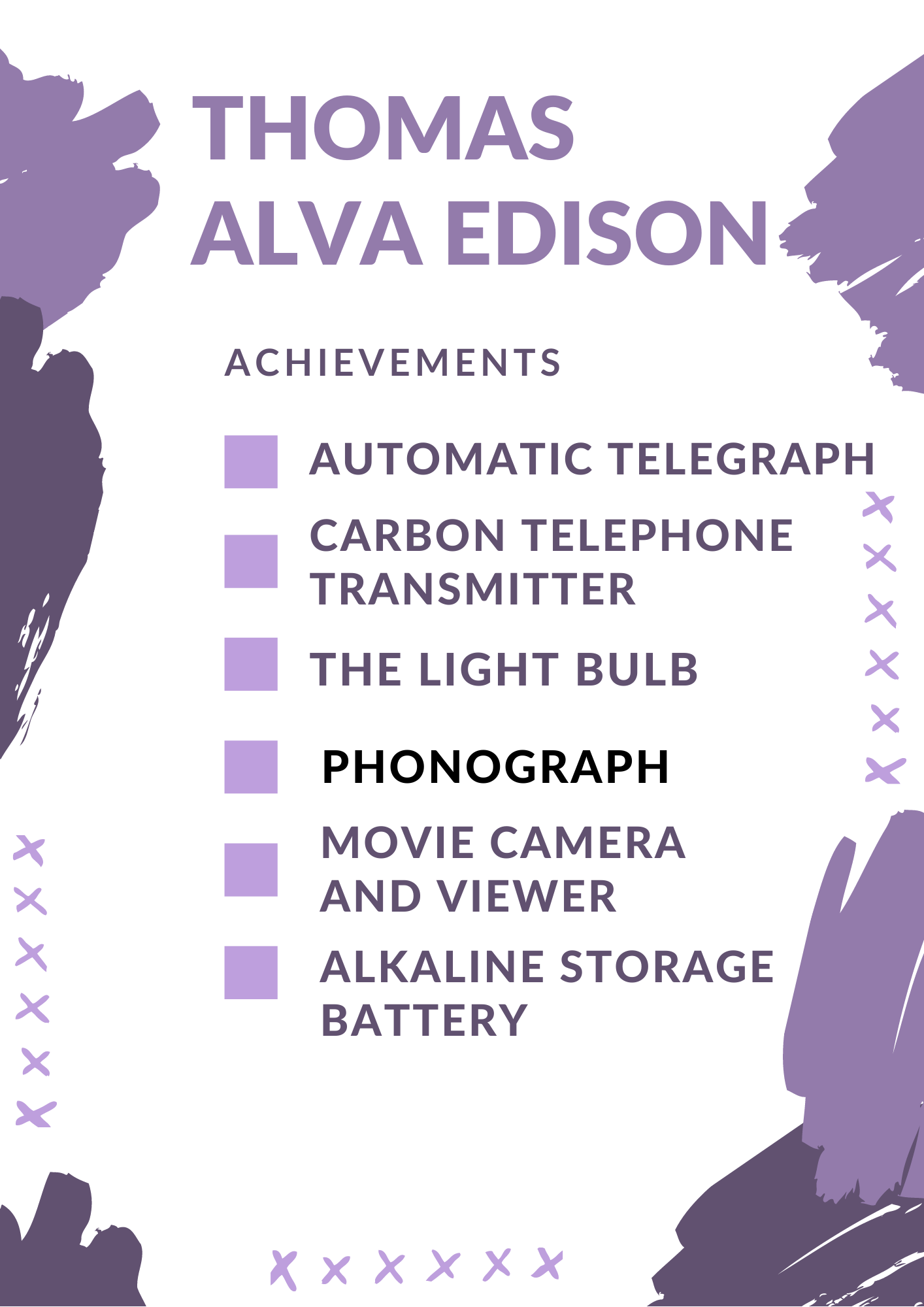
Automatic Telegraph; While Samuel Morse’s invention of the telegraph in the 1830s and 1840s made it possible for the first time to communicate over long distances, the device had its drawbacks. An operator had to listen to incoming dots and dashes in Morse code, which slowed messages to a speed of 25 to 40 words per minute. A British system for automatically printing code in ink on paper only achieved 120 words tops.
Between 1870 and 1874, Edison developed a vastly superior system, in which a telegraph receiver utilized a metal stylus to mark chemically-treated paper, which then could be run through a typewriter-like device. It was capable of recording up to 1,000 words a minute, which made it possible to send long messages quickly.
Carbon Telephone Transmitter; It was Alexander Graham Bell who patented the telephone in 1876. But Edison, with his knack for building upon others’ innovations, found a way to improve Bell’s transmitter, which was limited in how far apart phones could be by weak electrical current.
Edison got the idea of using a battery to provide current on the phone line and to control its strength by using carbon to vary the resistance. To do that, he designed a transmitter in which a small piece of lampblack (a black carbon made from soot) was placed behind the diaphragm. When someone spoke into the phone, the sound waves moved the diaphragm, and the pressure on the lampblack changed. Edison later replaced the lampblack with granules made from coal—a basic design that was used until the 1980s.
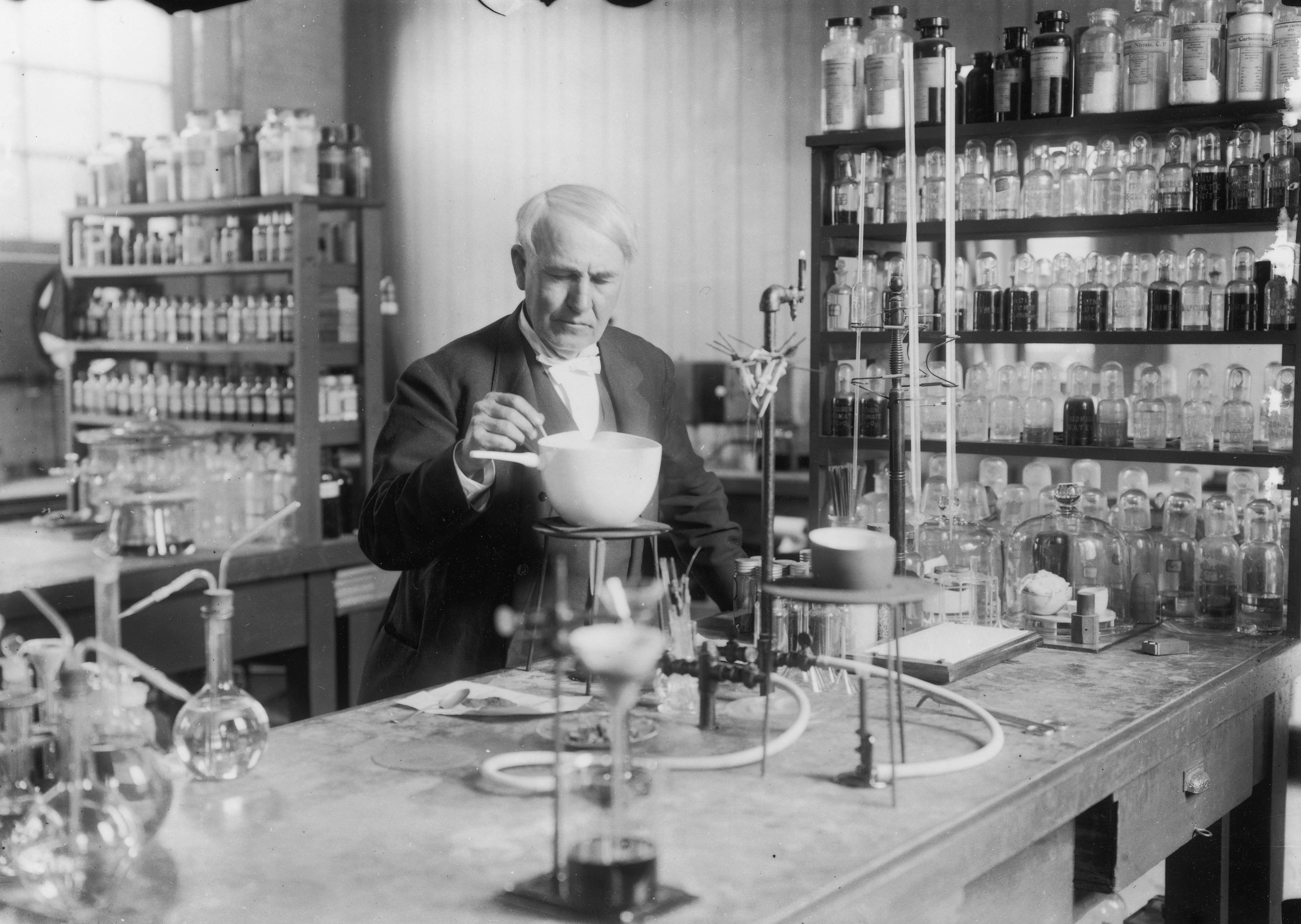
The Light Bulb; Contrary to popular belief, Edison didn’t actually invent the incandescent light bulb. But he invented and marketed a design that was the first to be long-lasting enough to be practical for widespread use.
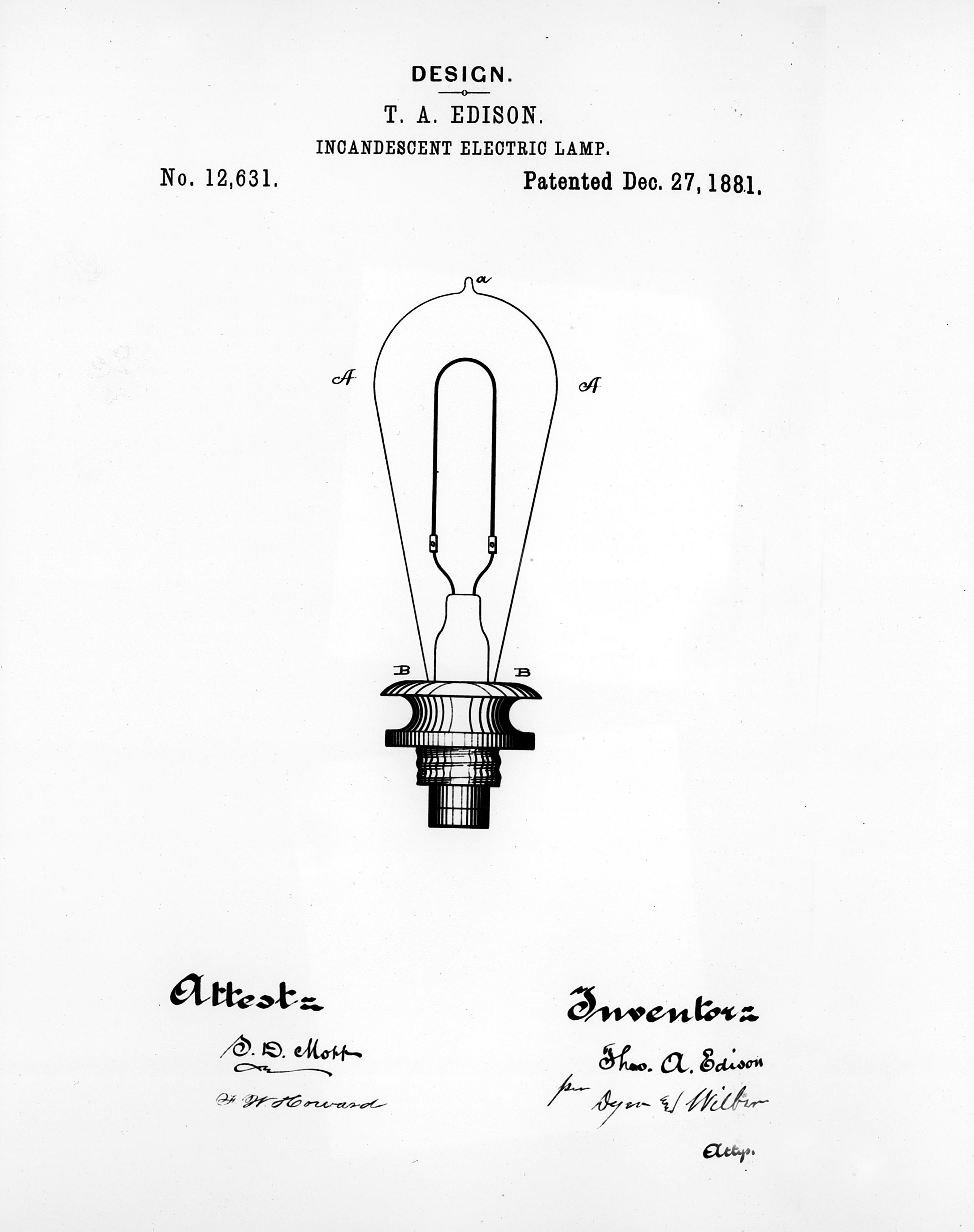
“Edison was one of a half dozen who was putting the elements of a viable lighting system together in those years, and since Edison was late to the race, he benefited from all his predecessors and rivals,” Freeberg explains.
In the late 1870s, Edison designed a vacuum bulb, in which a metal filament could be heated to create light. One night, after absent-mindedly rolling between his fingers a piece of lampblack, the material he used in his telephone receiver, he got the idea for switching to a carbonized filament. After initially using carbonized cardboard, he began experimenting with other materials, and eventually settled upon bamboo, which possessed long fibers that made it more durable. Eventually, the combination of bamboo filaments and an improved vacuum pump that removed air more effectively enabled Edison to increase the lifetime of bulbs to approximately 1,200 hours.
Phonograph; While developing his telephone transmitter, Edison got the idea of creating a machine that could record and playback telephone messages. That notion led him to imagine being able to record not just voices, but music and other sounds, by using sound to vibrate a diaphragm and push a stylus that made indentations on a cylinder covered with wax paper that was being turned by a crank.
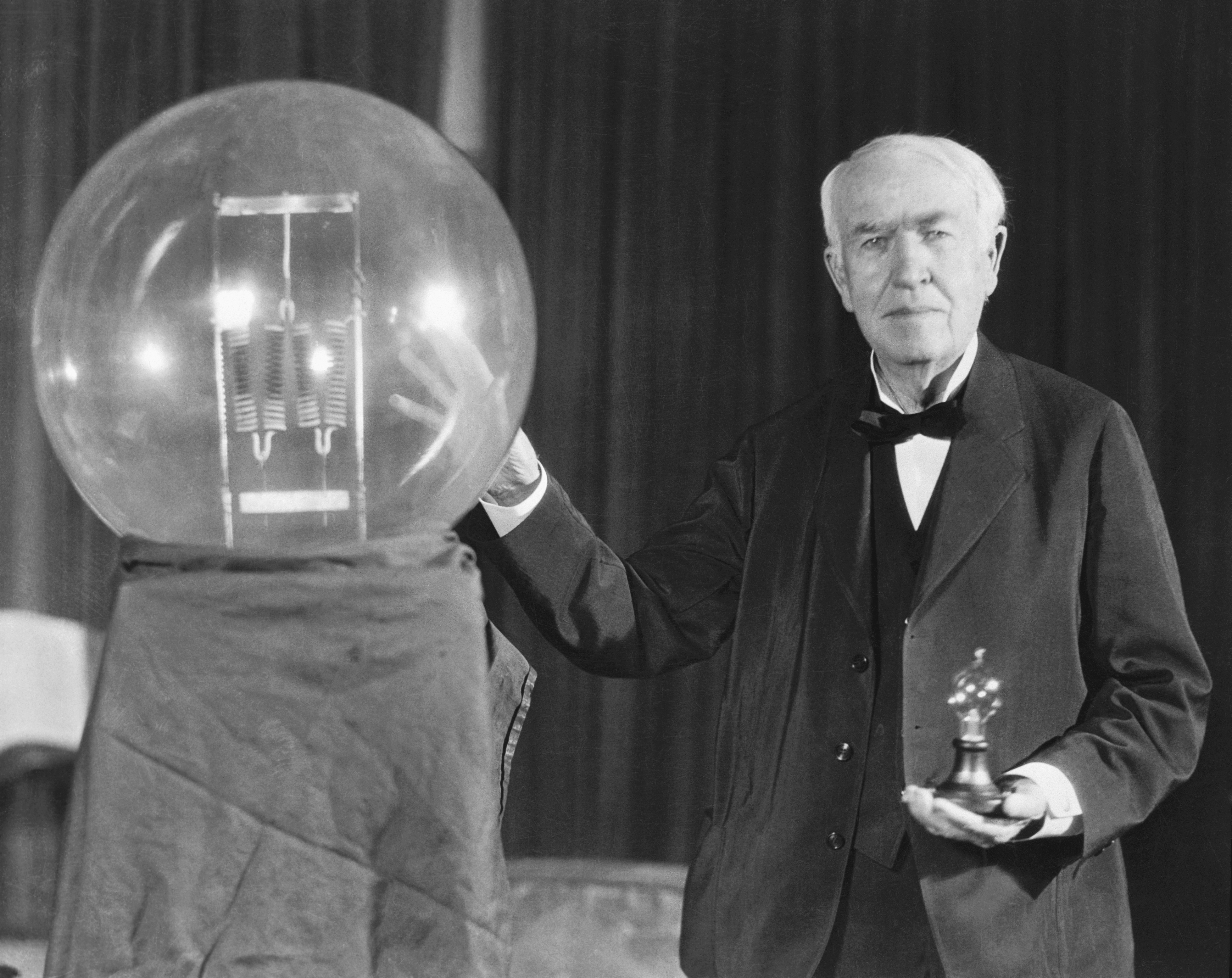
In late 1877, he got a machinist to build the device, using tin foil instead of wax, and Edison recorded the nursery rhyme “Mary Had a Little Lamb.” The following year, he was granted a patent for the design, which also included a lighter needle to find the groves and transmit vibrations to a second diaphragm, which recreated the person’s voice.
Edison’s phonograph created a sensation and helped enhance his reputation as a great inventor. Eventually, he began to market and sell the machines and cylinder records, reverting again to using wax. But by the early 1900s, the Victor Talking Machine Company’s phonographs that played discs surpassed Edison’s cylinder phonographs in popularity. Even though cylinders produced better-quality sound, the early discs had a big advantage in that they could fit four minutes of music, compared to the two minutes that could fit on a cylinder.
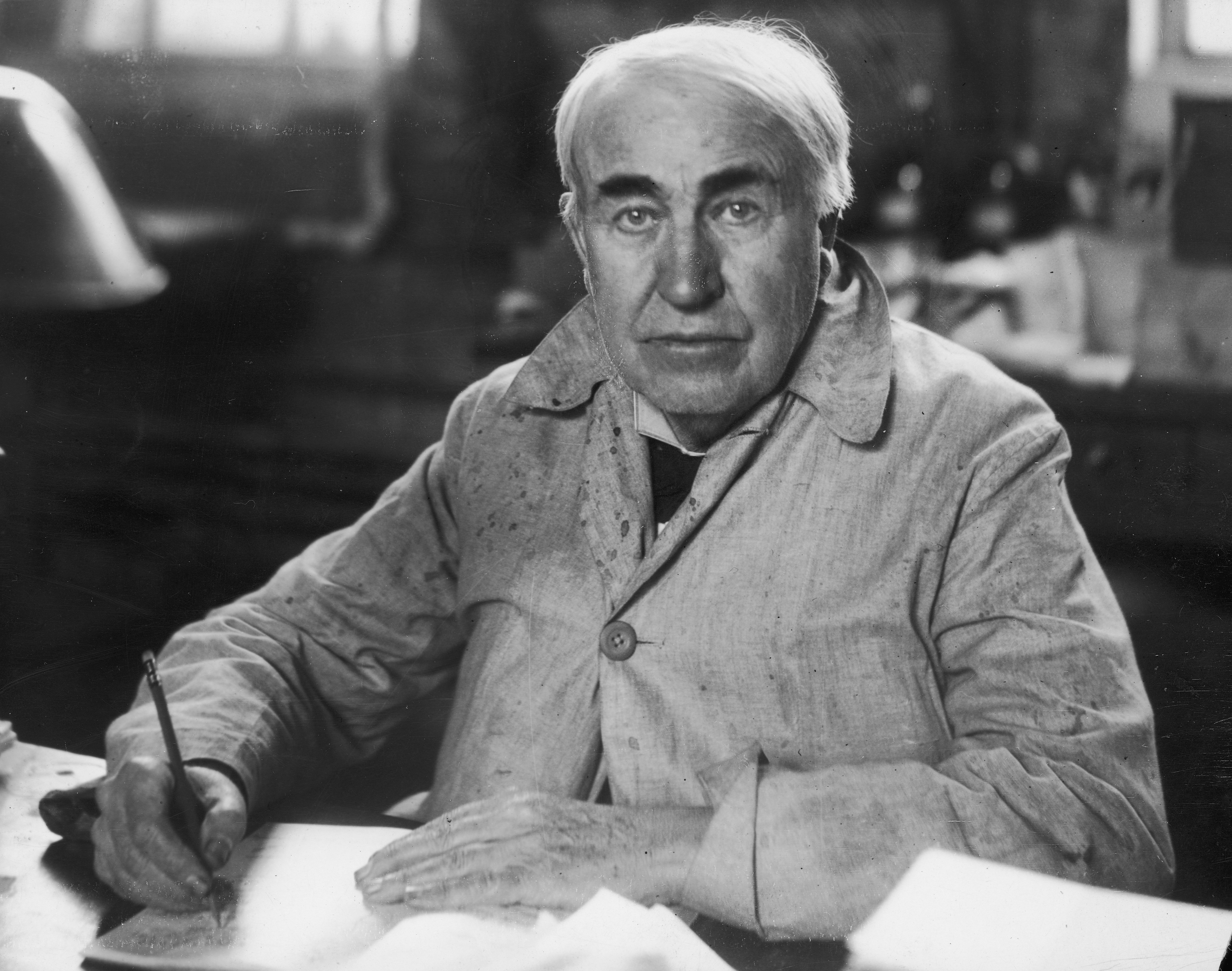
Movie Camera and Viewer; In the late 1880s, Edison supervised his lab’s development of a technology “that does for the eye what the phonograph does for the ear.” Most of the work on the Kinetograph, an early movie camera, and the Kinetoscope, a single-person peephole movie viewer, was actually performed by Edison’s employee William Kennedy-Laurie Dickson.
Movies became a big industry and Edison’s camera and viewer were quickly replaced by innovations such as the Lumière Cinématographe, a combination camera, printer, and projector that allowed audiences to watch a film together. But Edison adjusted and his company became a thriving early movie studio, churning out scores of silent films between the 1890s and 1918 when it shut down production.
Alkaline Storage Battery; When the automobile was developed in the late 1800s, electric vehicles were more popular than those equipped with gasoline-burning internal combustion engines. But early electric cars had a big drawback—the batteries they used were heavy and tended to leak acid, which corroded the cars’ interiors.
Edison decided to take on the challenge of inventing a lighter, more dependable, and more powerful battery. After conducting extensive research and the embarrassing flop of an early design, Edison came up with a reliable alkaline battery, and in 1910 began production of it. His work, however, was soon overshadowed by Henry Ford’s development of the inexpensive Model T car that ran on an internal combustion engine.
Nevertheless, Edison’s storage battery was used in mining lamps, trains, and submarines and turned into the most successful product of Edison’s later career.
Interesting facts about Edison:-
- In 1854, Edison’s family moved to Port Huron, Michigan, where he attended public school for a total of 12 weeks.
- A hyperactive child, prone to distraction, he was deemed "difficult" by his teacher. His mother quickly pulled him from school and taught him at home.
- His mother quickly pulled him from school and taught him at home. At age 11, he showed a voracious appetite for knowledge, reading books on a wide range of subjects. In this wide-open curriculum Edison developed a process for self-education and learning independently that would serve him throughout his life.
- At age 12, Edison convinced his parents to let him sell newspapers to passengers along the Grand Trunk Railroad line. Exploiting his access to the news bulletins teletyped to the station office each day, Edison began publishing his own small newspaper, called the Grand Trunk Herald.
- Edison also used his access to the railroad to conduct chemical experiments in a small laboratory he set up in a train baggage car. During one of his experiments, a chemical fire started and the car caught fire.
- The conductor rushed in and struck Edison on the side of the head, probably furthering some of his hearing loss.
Edison died on October 18, 1931, from complications of diabetes in his home, Glenmont, in West Orange, New Jersey. He was 84 years old. Many communities and corporations throughout the world dimmed their lights or briefly turned off their electrical power to commemorate his passing.
Also Read: MeitY, some other govt departments set up accounts on native micro-blogging site Koo
